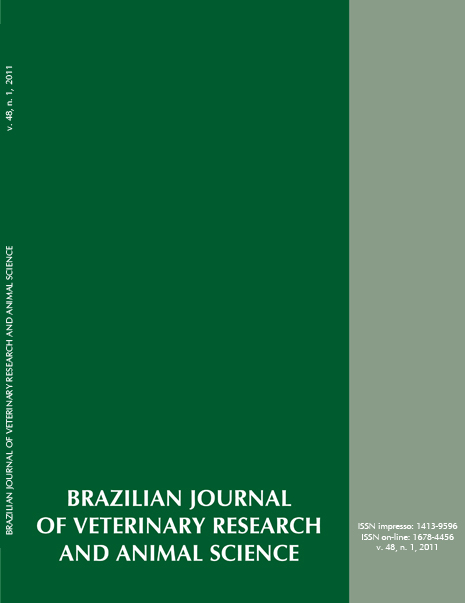Total fraction of mononuclear cell or stromal vascular fraction transplant associated with cellulosic membrane in experimental cutaneous wounds in rabbits
DOI:
https://doi.org/10.11606/S1413-95962011000100008Keywords:
Fraction of cells, Repair, Wound, Skin, RabbitAbstract
The skin presents various important functions to the organism. The maintenance of its integrity is fundamental, among others, to prevent penetration of microorganisms and exit of liquids essential to life maintenance. Due to its constant environment exposure, the skin is highly susceptible to trauma which can result solutions of continuity. The healing of wounded skin should be fast and many alternatives are searched for, aiming to reduce repair time and to guarantee a functional and esthetically acceptable scar. One option to repair injured tissues which is ever more viable is cellular therapy with adult stem cells. The aims of this study consisted in evaluating the transplant of total mononuclear cell fraction (TMCF) from bone marrow (BM) or stromal vascular fraction (SVF) from adipose tissue (AT), associated with the use of cellulose membrane. To carry out this experiment, 20 rabbits were randomly divided in four groups with five animals each. After induction of the experimental cutaneous wound, Group A did not receive any treatment; group B received only cellulose membrane; and groups C and D, in addition to receiving the membrane, were submitted to autologous transplant of TMCF, with total cell value between 6,92 x 10(6) and 4,91 x 10(7) and a viability of 82 to 97% or SVF, with total cell value between 9,6 x 10(5) and 6,5 x 10(6) and a viability of 66 a 87%, respectively. At the end of the evaluation period, the three treated groups presented significant statistical difference of wound area in relation to the control group, and the group which received SVF from adipose tissue presented the shortest wound healing time.Downloads
Downloads
Published
2011-02-01
Issue
Section
UNDEFINIED
License
The journal content is authorized under the Creative Commons BY-NC-SA license (summary of the license: https://
How to Cite
1.
Treichel TLE, Cunha MGMCM da, Cunha JPMCM da, Santos Júnior E de B, Leme Júnior P de T de O, Costa MM, et al. Total fraction of mononuclear cell or stromal vascular fraction transplant associated with cellulosic membrane in experimental cutaneous wounds in rabbits. Braz. J. Vet. Res. Anim. Sci. [Internet]. 2011 Feb. 1 [cited 2025 Apr. 13];48(1):62-7. Available from: https://revistas.usp.br/bjvras/article/view/34377





